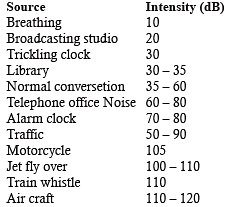31 Years NEET Previous Year Questions: Neural Control & Coordination - 2 - NEET MCQ
25 Questions MCQ Test Biology Class 11 - 31 Years NEET Previous Year Questions: Neural Control & Coordination - 2
When we migrate from dark to light, we fail to see for sometime but after a time visibility becomes normal. It is an example of [2001]
What is intensity of sound in normal conversation? [2001]
| 1 Crore+ students have signed up on EduRev. Have you? Download the App |
Neuroglia consist of cells found in the[1999]
Suspensory ligament is part of [1999]
In vertebrates, simple reflex action is [1999]
Anesthetics reduce pain by blocking the transmission of nerve impulses. The kind of chemicals working as anesthetics are those that block [1998]
In the chemistry of vision in mammals, the photosensitive substance is called [1997]
The Nissl’s granules of nerve cells are made up of [1997, 03]
Cornea transplantation is outstandingly successful because [1996]
In humans, visceral organs are innervated by[1996]
The sympathetic nerves in mammals arise from[1995]
Respiratory centre is situated in [1994]
CNS is mostly made of
[1993]
Light rays entering the eye is controlled by [1993]
Retina is most sensitive at [1993]
Function of iris is to [1993]
Iris is part of [1992]
Afferent nerve fibres carry impulses from [1992]
Third ventricle of brain is also known as [1990]
One function of parasympathetic nervous system is [1990]
Which of the following cranial nerves can regulate heart beat? [1989]
Sensitive pigmented layer of eye is [1989]
Acute vision is present in [1988]
Vagus nerve is
Light rays entering the eye is controlled by
|
182 videos|365 docs|153 tests
|


















